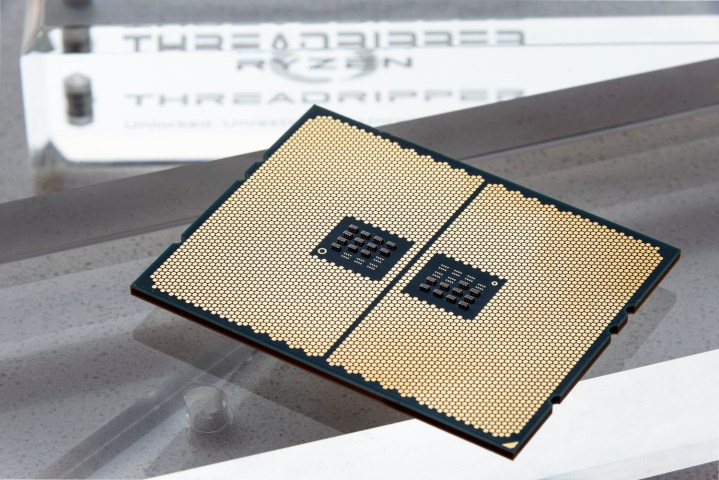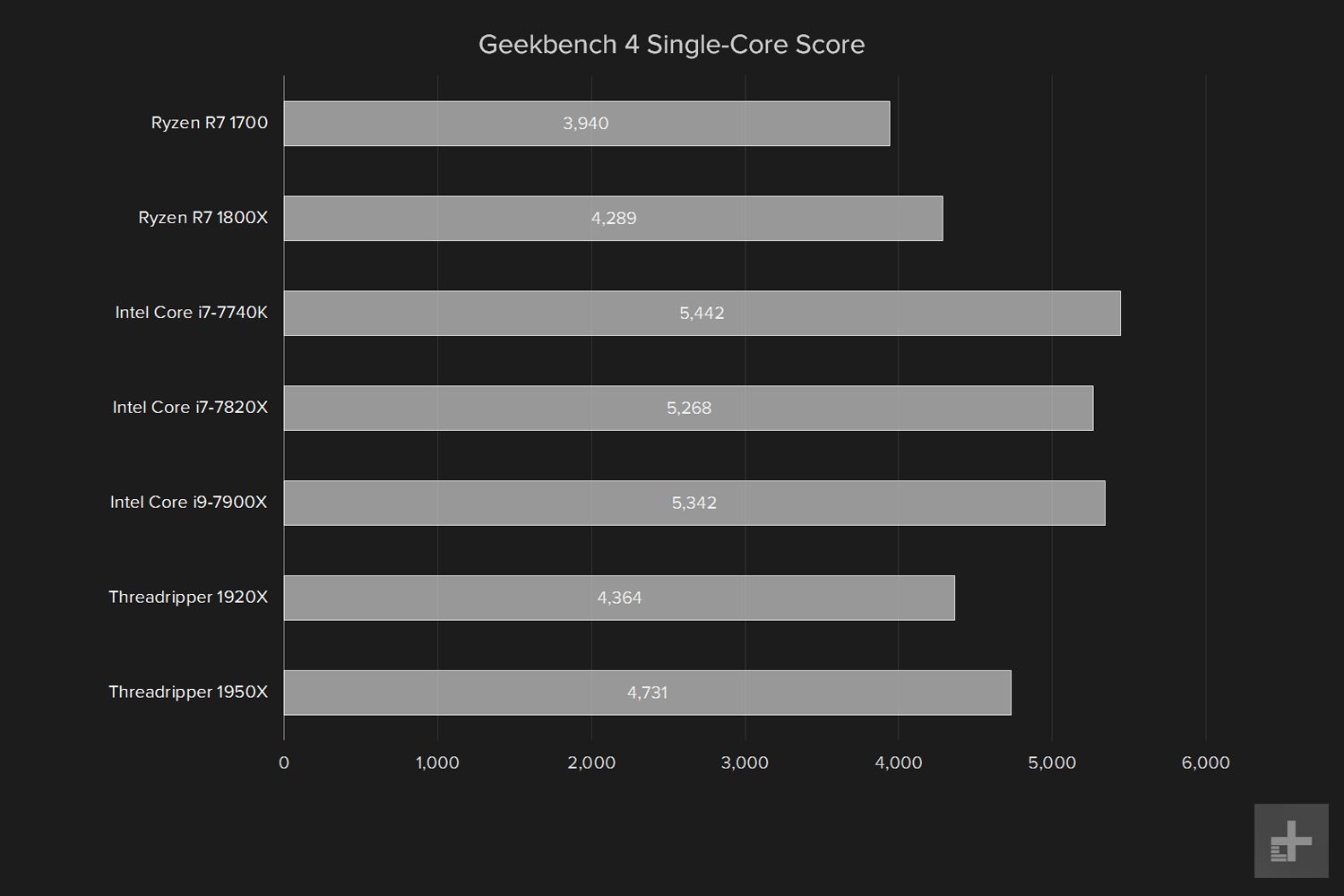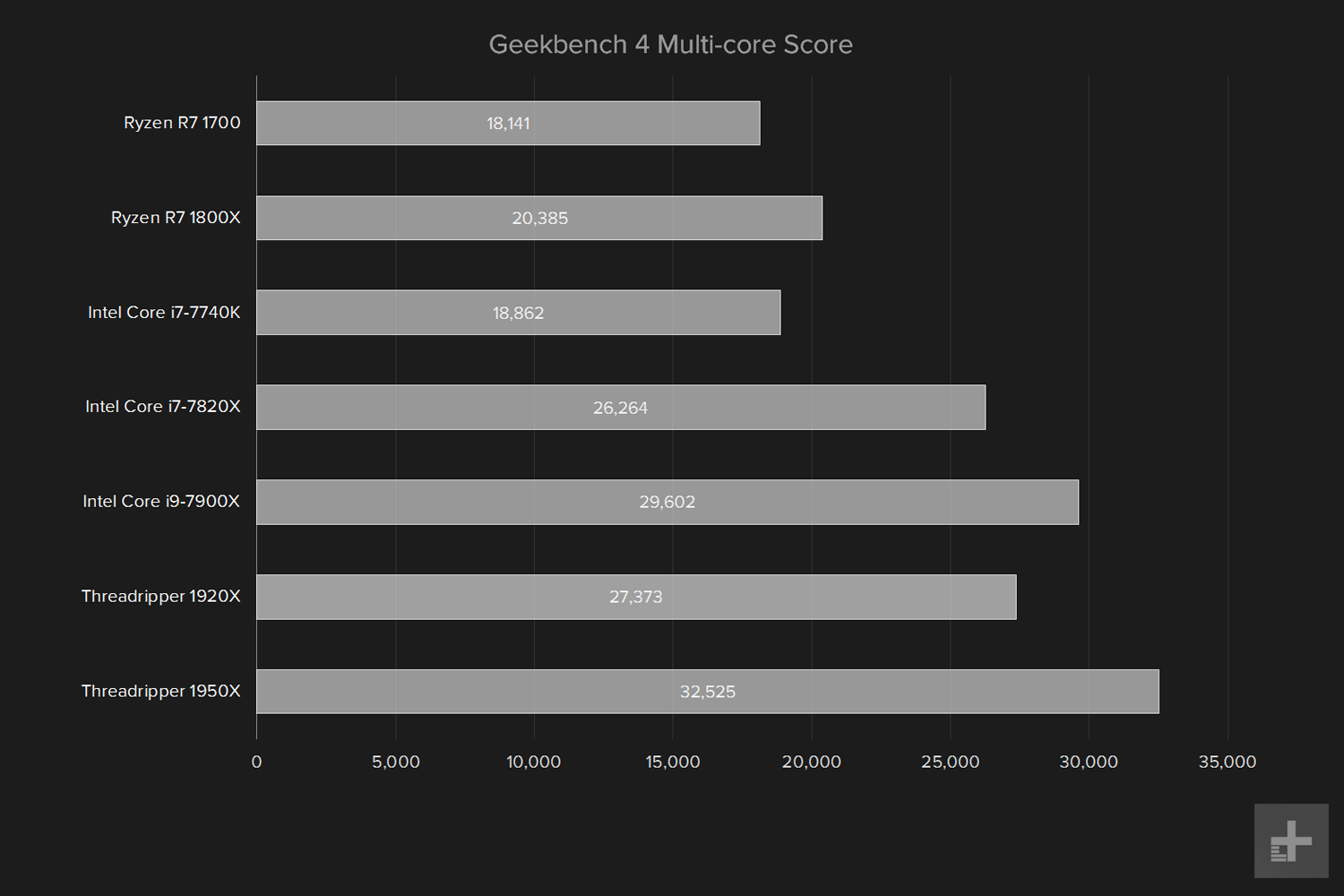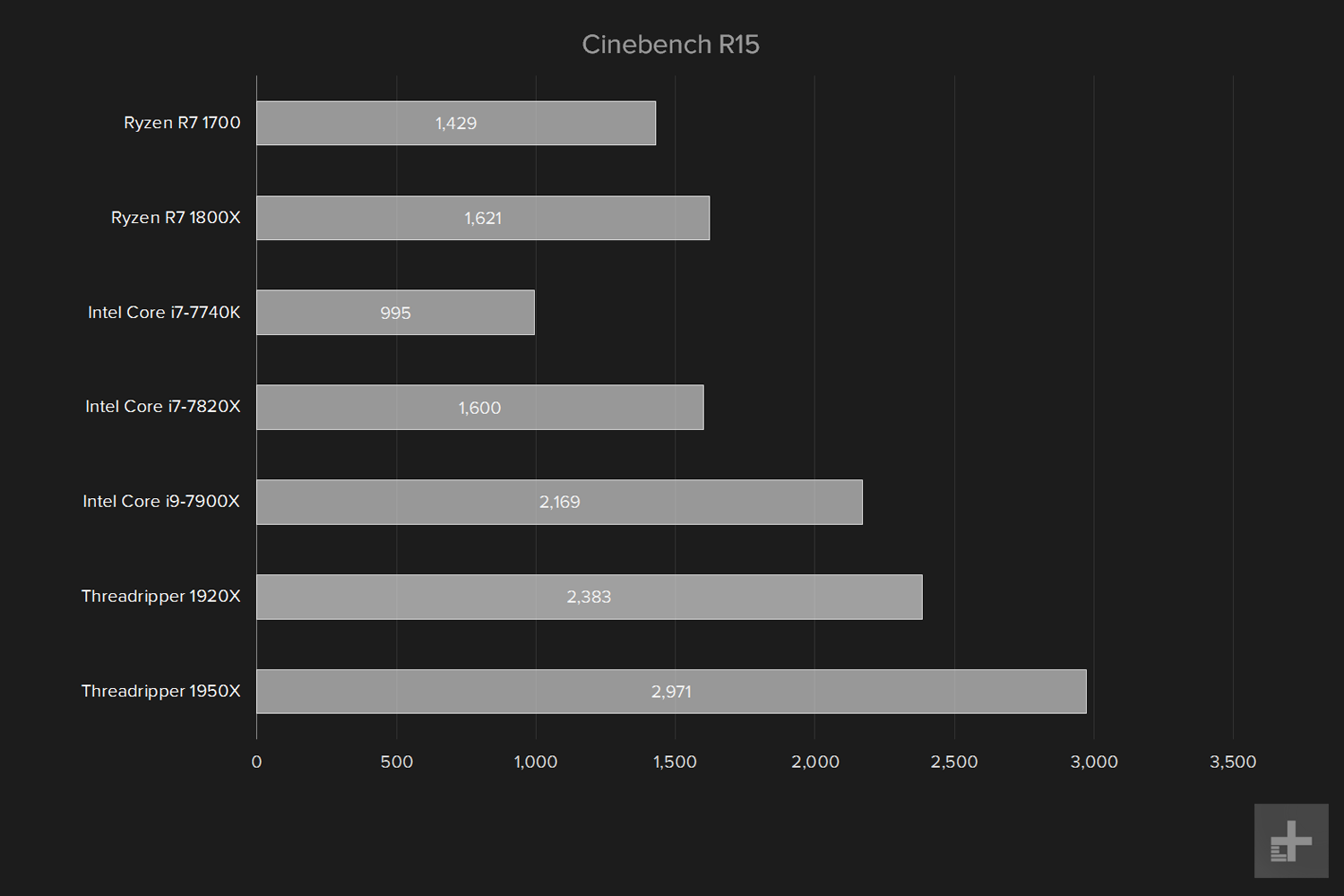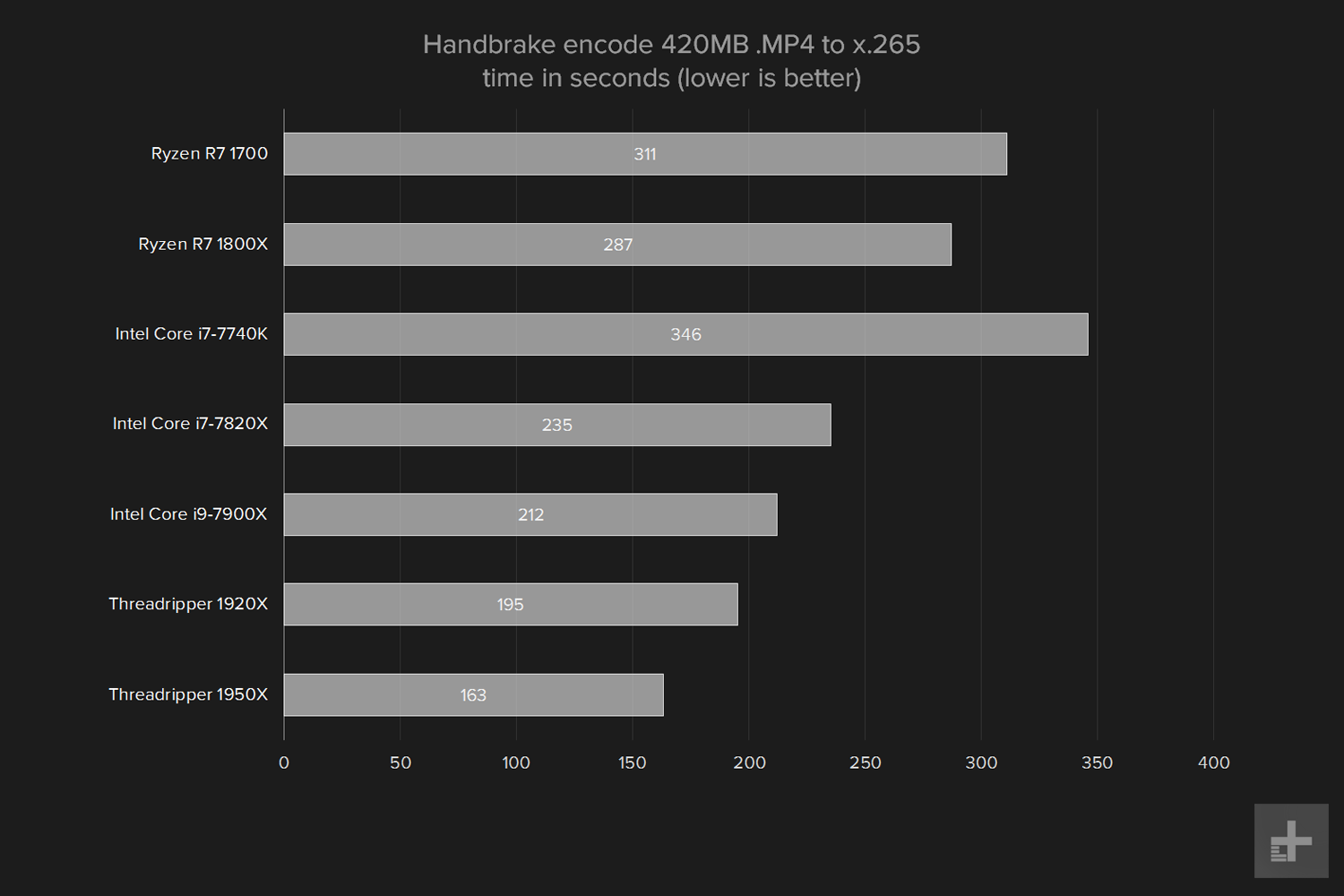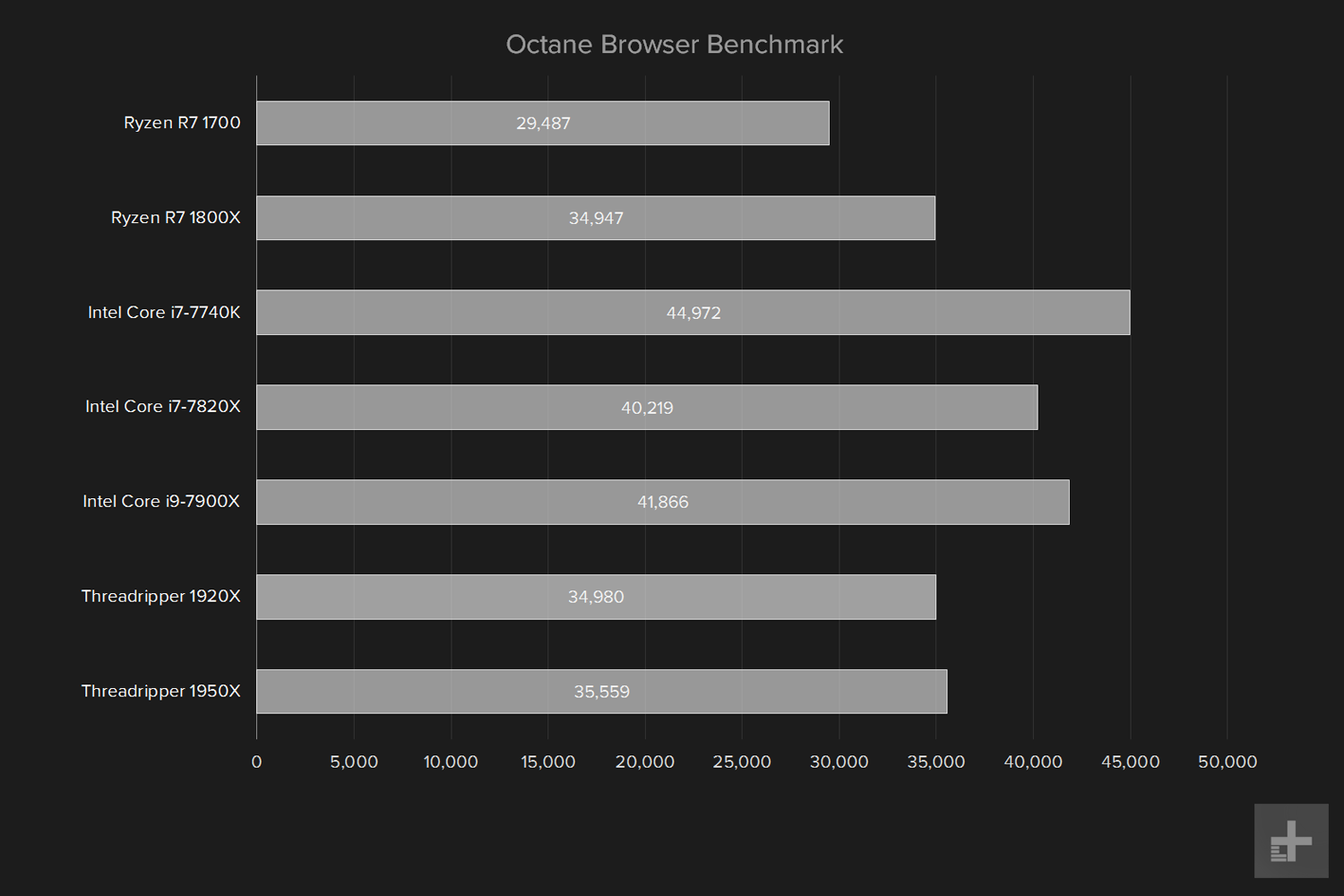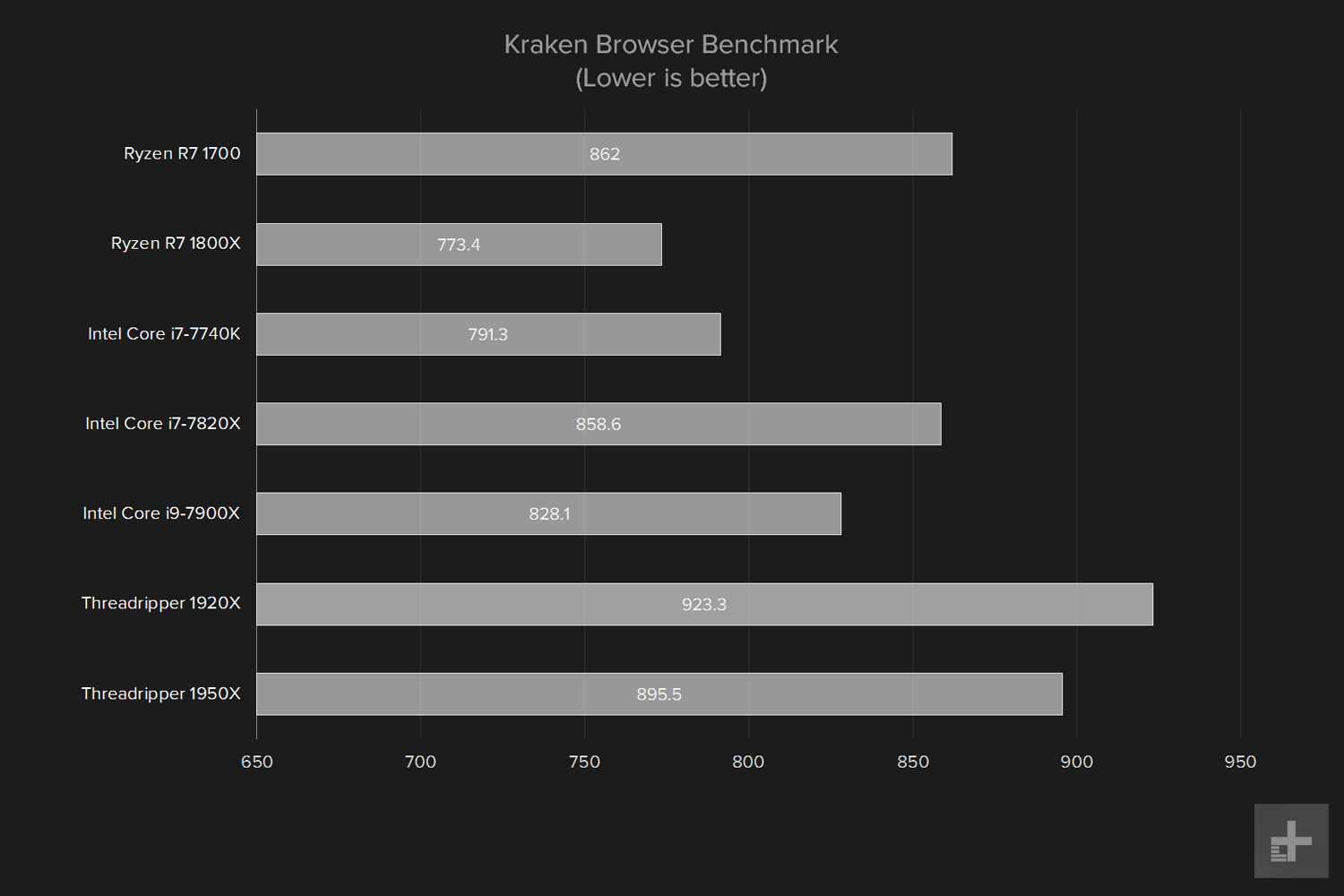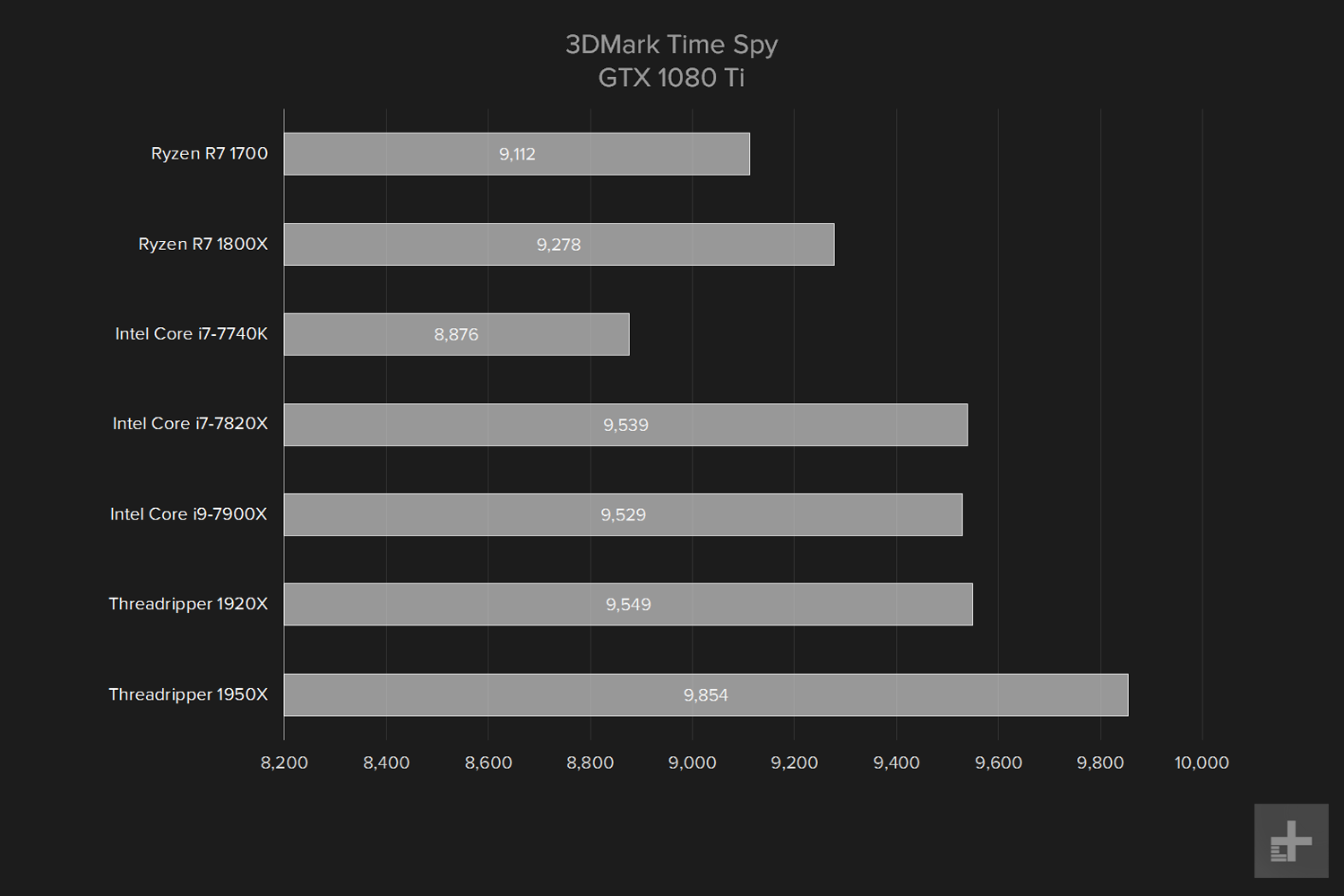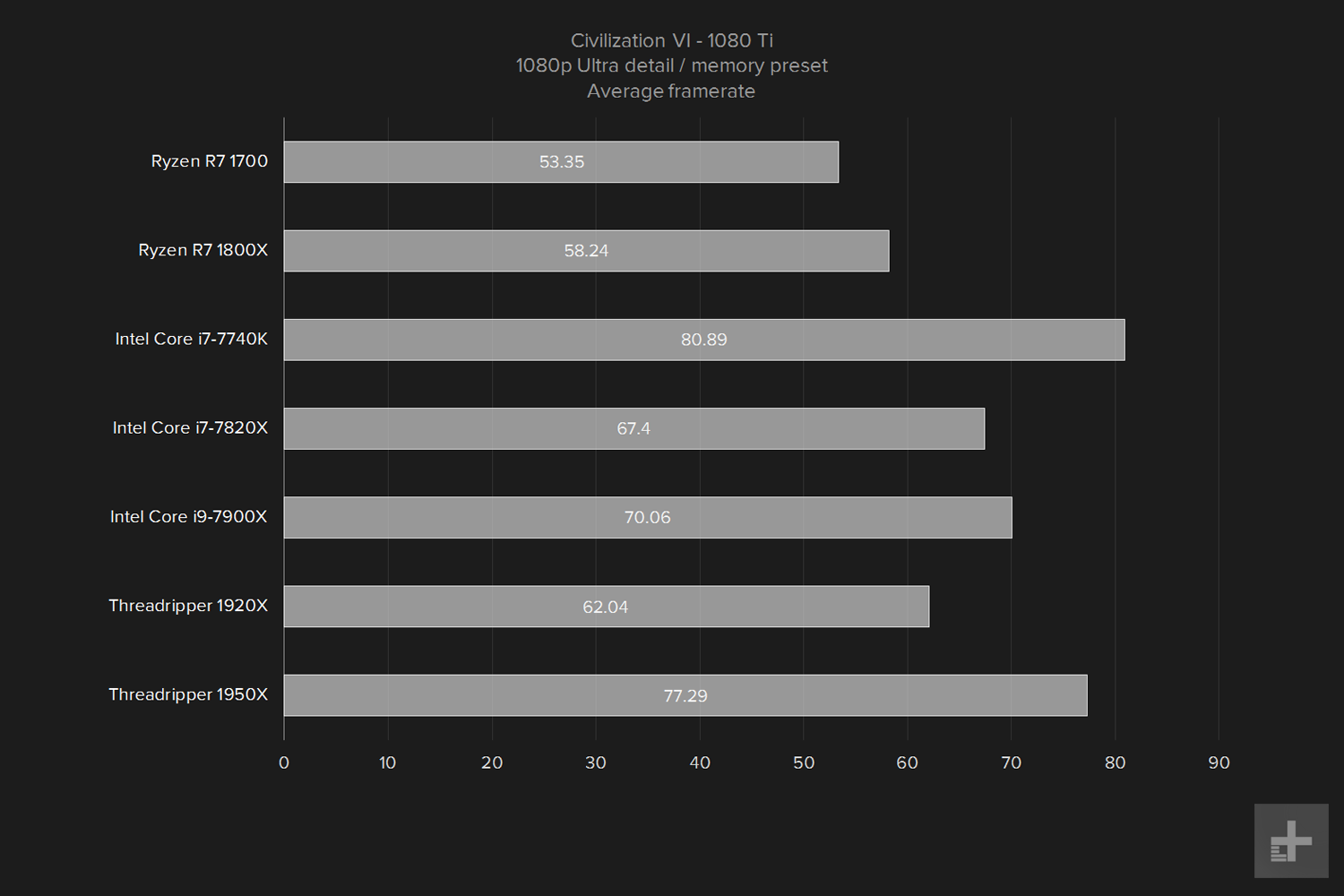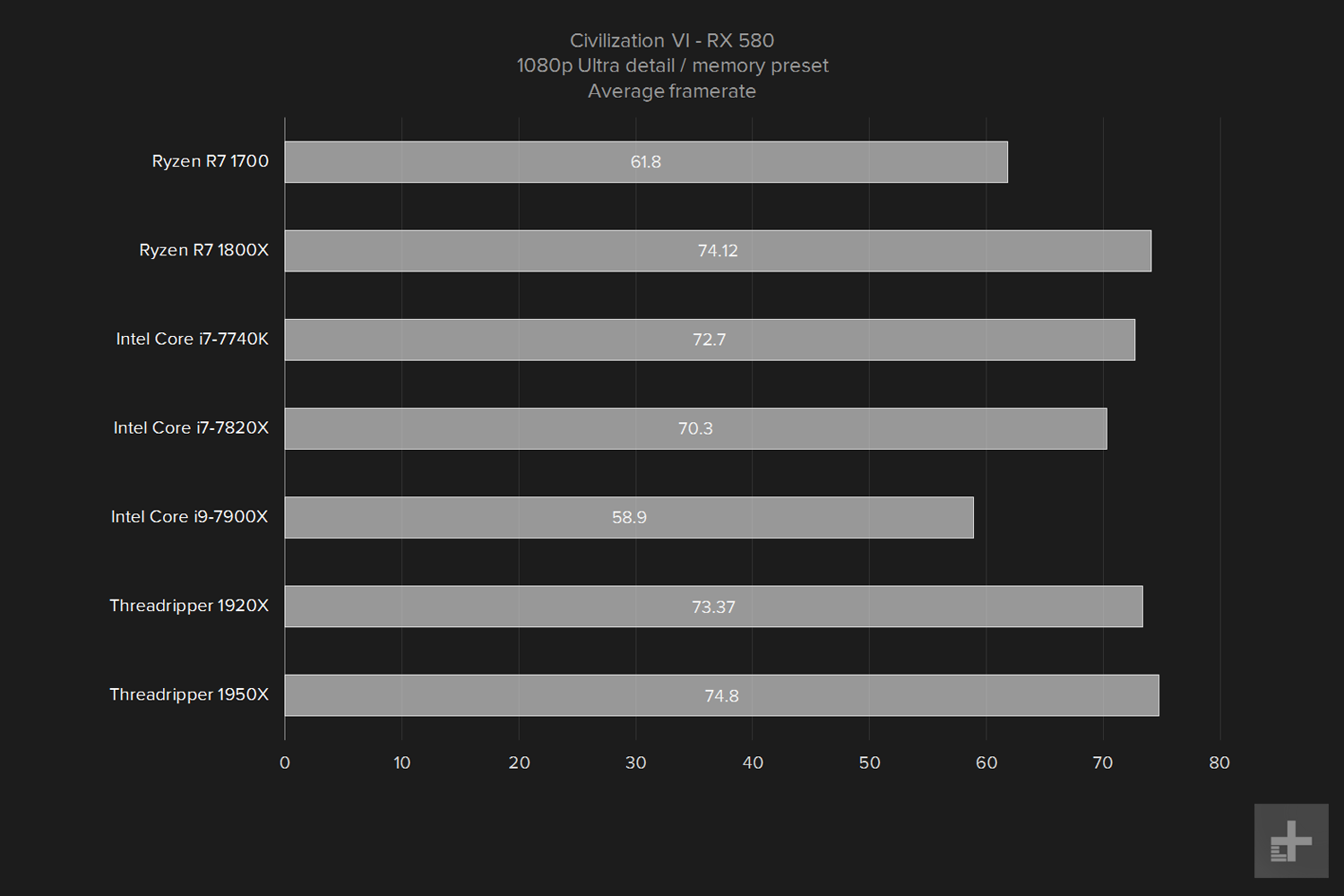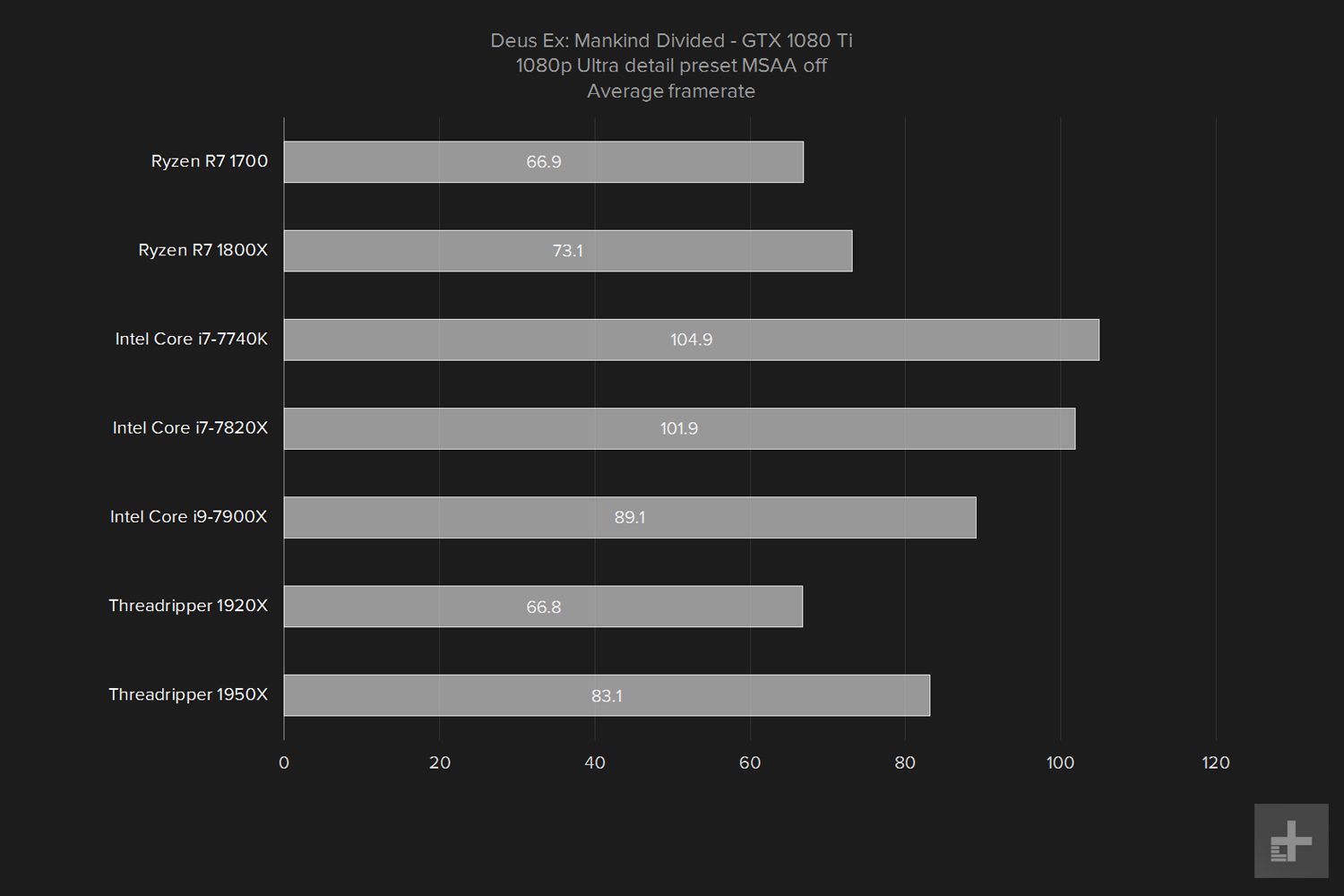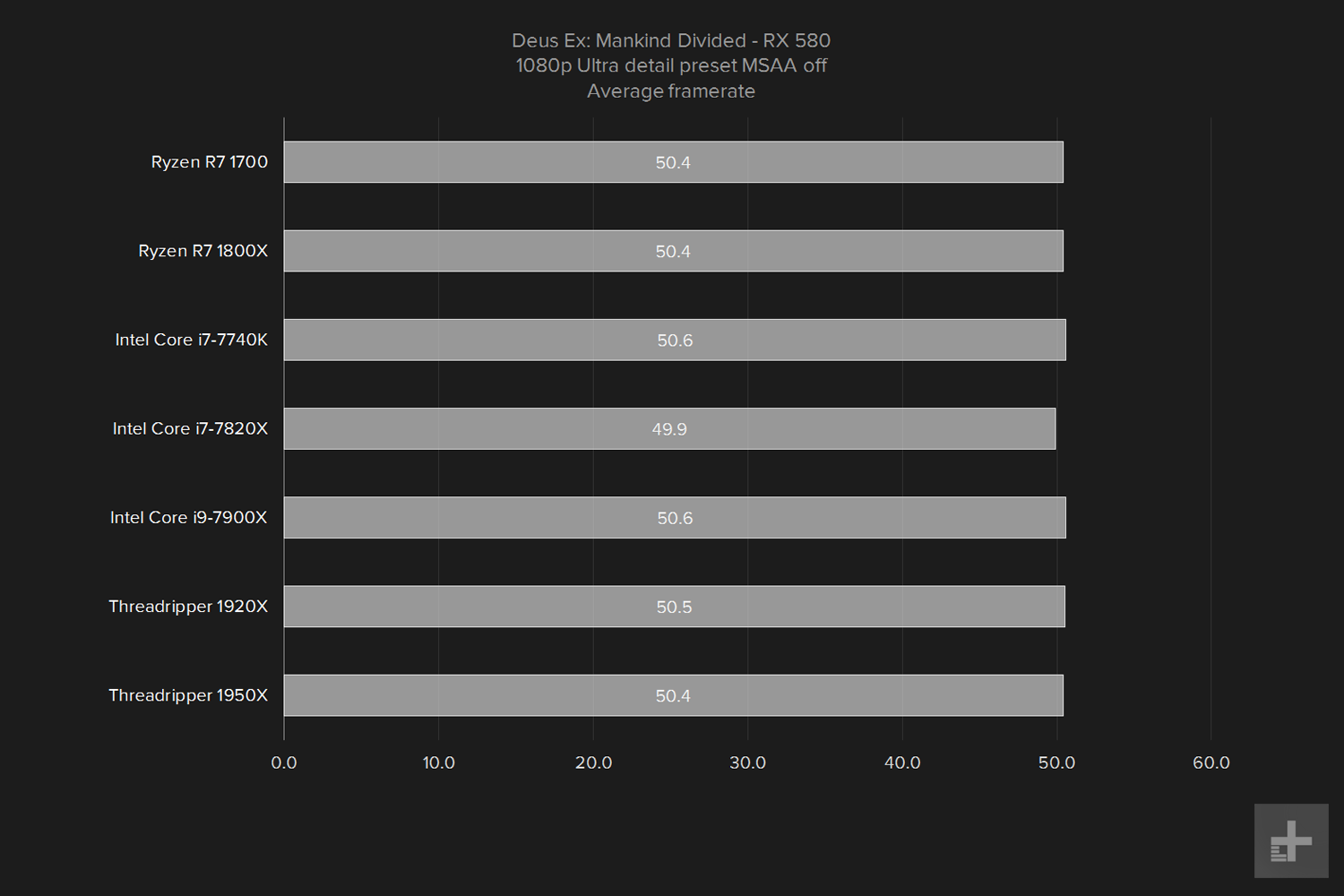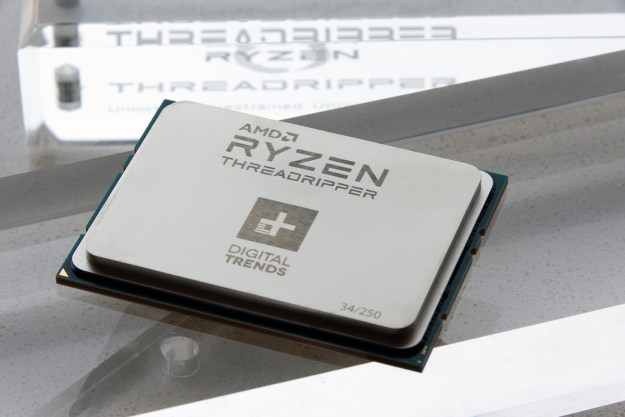
“Threadripper demolished our multi-core benchmark records without breaking a sweat.”
- Amazing multi-core performance
- Plenty of PCIe lanes
- Fast memory support
- Very competitive pricing
- Strong multi-tasking capabilities
- Middling single-core performance
Buying a processor used to be boring. For years, Intel dominated the market with better per-core efficiency, better prices, and chips in every pre-built system from the cheapest used PC to the most expensive battle station.
Then the Ryzen 7 chips showed up, and turned AMD from the plucky underdog, to a leading candidate for your next system. With Ryzen Threadripper finally here, the company’s transformation from runner-up to contender is almost complete.
This supercharged desktop CPU maxes out at 16 cores and 32 threads, with support for quad-channel DDR4, 64 PCI Express 3.0 lanes, and a swath of under-the-hood improvements built for insane speed and impressive multi-tasking.
You’d better be willing to pay for the performance. While less expensive then Intel chips with similar core counts, the Threadripper 1920X starts at $800, and the 1950X is a cool grand. This isn’t budget hardware.
Does Threadripper pour fuel on the fires of AMD’s glorious comeback, or serve as proof there’s more to performance than core count?
XXX-L
Packing in so many cores takes up a lot of space, and the Ryzen Threadripper chips bear a closer resemblance to the oversized AMD Epyc line of server chips as a result. Even after handling Intel’s oversized Core X-Series CPUs, the Threadripper chips have a commanding presence. While Intel chips are labelled with small, functional text, the AMD option bears the name Threadripper in big, stylized letters right across the face.
However, the AMD chips do have one similarity with their Intel peers. The contact pins are on the motherboard, rather than the processor, which is the opposite of what we’re used to seeing from the red team.
Installation has changed, and now follows a process that resembles the similarly beefy AMD Epyc server chips. The box includes a Torx T20 screwdriver with a ratchet calibrated to exactly the pressure needed to properly seat the chip. While the size of the chip may make it seem intimidating, we found it no harder to install than Intel’s competing processors. Both are easy to install, and include fool-proof features that make damage during installation unlikely.
AMD’s Threadripper processors are hilariously huge. Even Intel’s Core i9 is dwarfed.
Users have their pick of four air cooling options, or 20 all-in-one liquid cooling options, at launch. That’s thanks to a special bracket included with each chip, designed to work with Asetek coolers. Asetek doesn’t sell coolers, but instead sells designs to most of the major manufacturers, and the bracket should work with most coolers that have a circular block on the CPU end. It won’t cover the whole chip, which may unnerve you, but AMD says the coverage on existing AM4 compatible AIO coolers is enough to sap the heat off the processor dies. We didn’t have an issue with heat during our tests.
Aside from the gigantic CPU, a Threadripper system will look like any other high-end PC. There are already X399 motherboards from Gigabyte, ASRock, Asus, and MSI, and all of them are tricked out with every feature in their respective OEM’s arsenal. They’re currently only available in ATX form factors, and we wouldn’t expect to see ITX, or possibly even mATX, any time soon, considering the physical size of Theadripper.
More threads than you can handle, perhaps literally
All three Ryzen Threadripper chips have an unlocked multiplier, allowing users to push the chip’s base clock past its stock settings — 3.4GHz for the 1950X, and 3.5GHz for the 1920X. That said, if you choose not to overclock the chips, they’ll run in their normal mode, which allows the clock speed to push another 200MHz past the normal boost clock when thermal overhead allows.
Because 16 core chips are still on the cutting edge for home desktop applications, AMD has added another set of switches to the Ryzen Master overclocking utility, which help ensure compatibility and perfect performance for the situation. Users looking for a simple explanation can find one in the new preset profiles, Gaming and Creative, which optimize the CPU for either a spot of gaming, or the more demanding work tasks the chip is really meant for.
Choosing one of those presets affects a pair of settings under the hood. The first is what AMD calls Legacy Compatibility Mode, which simply turns off half of the chip’s cores. While that’s bound to hurt multitasking and CPU bound performance, it also may help games that can’t handle a full 32 or 24 threads. As noted when Ryzen first appeared, some older titles do not handle it well, and may even refuse to run – though that is very rare.
Creative mode enables all threads, and distributes the memory access to allow for more total bandwidth when working with large data sets and demanding tasks. It’s the mode AMD recommends for almost everything, and in our testing, there was basically no reason to flip over to game mode unless an application simply wouldn’t run with a full set of 32 threads.
Chip, set, match
As with any high-end CPU, the chip itself is only half of the equation. The X399 chipset, which powers Threadripper compatible motherboards, can handle a swath of premium components and features. It’s competing with Intel’s highest-end consumer computing platform, X299, but there’s a key difference between the two. With AMD, the platform determines the level of component and memory support. With Intel, the CPU can limit the features, such as the number of PCIe lanes you have access to, how fast memory can run, and whether you can overclock the chip.
Make no mistake — the Threadripper chips are a force to be reckoned with.
That means no matter which Ryzen Threadripper CPU ends up in a system, it will offer 64 PCI Express lanes, which is 20 more than Intel’s highest-end Core i9 chip offers. On the Intel side, you’ll find the Core i7-7820X only supports 28 lanes, with more budget friendly chips continuing to slash that number.
AMD provided many examples for what users could potentially do with 64 PCIe lanes. It’s more than enough for a pair of GPUs at full x16, plus two more at x8, with overhead to spare for some PCIe NVMe drives and even a network add-in card. That’s an extremely versatile set of options for extra components, and with storage solutions and complex rendering cards moving towards the standard, it’s more important than ever.
The Threadripper platform also supports Error-Correcting Code (ECC) memory, and quad-channel DDR4 memory up to 3,200MHz out of the box. The Core i9-7900X, meanwhile, supports 2,666MHz without overclocking, and without the bonus of ECC. This won’t matter to most people, but those building a workstation might want the extra memory features and performance that Threadripper offers.
The competition
The Ryzen Threadripper family consists of three chips, the 1950X, 1920X, and newly announced 1900X — which arrives in late August, a few weeks after the first chips. The 1950X will run users a cool $1,000, while the more modest 1920X shaves $200 off for an $800 price tag. The 1900X sits at a much lower $550 price point with 8 cores and sixteen threads.
These chips sit in direct price opposition to the Intel Core i9 Extreme Edition offerings recently fleshed out by the other team. The highest-end offering there is the 10-core, 20-thread Intel Core i9-7900X, which retails for between $1,060 and $1,120, and packs in ten cores, twenty threads, and a 3.3GHz base clock.
There are more high-end chips on the way from Intel in September 2017, including the Intel Core i9-7980XE. That chip will have 18 cores and 36 threads, beating Threadripper, but it will also have a much higher $2,000 price tag.
Packing more cores into a chip often comes with a sacrifice to single-core clock speed, an issue all the high-end Intel and AMD chips suffer from. The Threadripper 1950X may have 16 cores, but each only runs at a 3.4GHz base clock, and a 4.0GHz boost clock. Cutting four cores for the Threadripper 1920X only brings the base clock up to 3.5GHz, and leaves the boost clock untouched. The Intel Core i9-7900X has a similar 3.3GHz base clock, and 4.3GHz Turbo Boost, with just ten cores.
Hold on to your butts – benchmark records are about to break
Still, higher cores at a lower clock speed is good news for these CPUs, as workloads become increasingly capable of spreading resources around to more cores. Our tests reflect that, with almost all our practical tests representing well distributed, scalable workloads. We built all new test rigs for both the high-end Intel offerings, and Ryzen Threadripper, that we feel represent a premium desktop, albeit with limited storage space, for obvious reasons.
We built both systems into Thermaltake Suppresor F31 ATX mid towers, with Thermaltake 360mm AIO coolers. Both systems are rocking 32GB of DDR4 memory, with 3200MHz Corsair Vengeance in the Intel rig, and 3200MHz G.Skill TridentZ in the Threadripper station. Both systems are equipped with PCIe NVMe SSDs as their only form of storage, for simplicity’s sake.
Now, it’s the moment of truth. Are the threads ripped, as promised?
Whoa.
Aside from the Geekbench single-core test, these scores are by far the highest results we’ve seen from any computer, and it’s no small victory. The Cinebench rendering test result doesn’t just clobber Intel’s Core i9-7900X, it’s almost 500 points higher than the world record AMD’s Ryzen 7 1800X set in February 2017.
The Handbrake 4K conversion is particularly telling, as the Threadripper 1950X managed to shave more than a minute off the Core i9-7900X’s already short run time of three minutes, 32 seconds. Video encode and decode workloads are becoming an increasingly common task for high-end machines.
The 7-Zip benchmark only confirms what the other tests have told us — the Threadripper chips are a force to be reckoned with. Even the more modest Threadripper 1920X manages to sneak a win past the Intel Core i9-7900X, a chip that costs $200 more. The 1950X picks up the benchmark and body-slams it with flair. The processor’s combined 7-Zip score of 72,028 is about 30 percent quicker than Intel’s Core i9-7900X.
These numbers are ridiculous. In Handbrake, for example, the 1950X just about doubles the typical result we see from a high-end, overclocked Core i7-7700K desktop like the Origin Neuron.
Threadripper’s manhandling of our benchmarks means it’s likely to endure even heavy daily use without breaking a sweat, and capable of gaming, encoding, rendering, and computational work, all at the same time. Intel’s most expensive Core i9-7900X didn’t slouch, but it flinched.
Game on
While there’s nothing stopping Threadripper from taking on a few rounds of Overwatch, that’s certainly not what it’s built for. Our testing has shown that even the Ryzen 3 1300X won’t bottleneck mid-range GPU options like the RX 580, and the Ryzen 7 1700 is more than capable of handling any single GPU setup you throw at it. It’s not that there’s anything wrong with gaming on Threadripper – but you’d be spending three times more than you need to.
As you can see from these graphs, there are diminishing returns for high-end CPUs. Graphics cards are by far the biggest determining factor when it comes to frame rates, so the difference between our MSI Gaming X+ RX 580 and Zotac GTX 1080 Ti AMP! Edition are far more dramatic than those between the chips.
The Threadripper 1950X and 1920X both break the mold a bit in the Civilization VI benchmarks. The turn-based strategy game tends to be more CPU-dependent, which gives the extra cores a chance to strut their stuff. The Threadripper 1950X manages to pull ahead there in a meaningful way.
They still fell into the trap of a GPU bottleneck when playing Deux Ex: Mankind Divided with the RX 580, a solemn reminder you should reach for a less expensive chip if the only goal is mid-range gaming.
Our Take
AMD’s show-stopping Ryzen Threadripper 1950X and 1920X don’t just push high-end performance, they redefine it. Both chips clobber the Intel offerings at the same price point, and provide a much better platform for high-end computing. At $800 and $1,000, they don’t come cheap, but they are more affordable than Intel’s alternative.
Is there a better alternative?
As we’ve said before with these high-end components, not everyone needs this sort of overwhelming power, and anyone who does need it, should know exactly what they’re buying it for. That’s doubly so for $1,000 or more chips like Ryzen Threadripper, and Intel’s Core i9 offerings. If your goal is anything other than serious workstation tasks that must be completed as quickly as possible, a chip like this is overkill. On the other hand, if you do need this sort of power, nothing slower will do.
The Intel Core i9-7900X is the most obvious competitor, at just over $1,000 depending on the retailer. It has fewer cores, 20 less PCIe lanes, and lacks support for ECC memory. None of those are necessarily detrimental, until you realize the Threadripper 1950X is about $50 less. That makes it extremely difficult to recommend the Intel offering.
Intel’s chip does have one edge, and that’s in per-core performance. That’s why it scores so well in Geekbench’s single-core test. However, if per-core performance is what you want, you should look at a different class of chip. Threadripper and Core i9 are designed for maximum multi-core results.
How long will it last?
Though the winds of computing requirements may change on a whim, the Threadripper and X399 platform are built to weather the storm. Most users will find themselves with extra PCIe slots and lanes, extra slots for memory, and plenty of cores to handle increasingly complex workloads. These Threadripper chips will be very relevant for years to come.
Should you buy it?
Yes. For those who need this sort of a horsepower to render videos and 3D scenes, work with raytraced lighting, or handle major encoding tasks without having to hand over their entire system, the choice is clear. The high-end Threadripper chips offer better multi-core performance, more unlocked and under-the-hood options, and a much better platform for the same price as the Intel offering.
Editors' Recommendations
- I’ve reviewed every AMD and Nvidia GPU this generation — here’s how the two companies stack up
- AMD’s new CPU slammed as ‘anti-consumer at best’
- Gigabyte may have just leaked AMD next big release
- The gamers have spoken: AMD obliterates Intel in CPU sales
- AMD’s upcoming Ryzen 5 5600X3D could completely dethrone Intel in budget builds

